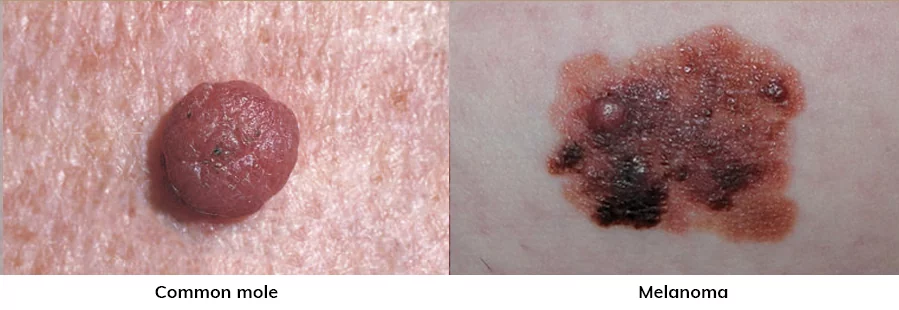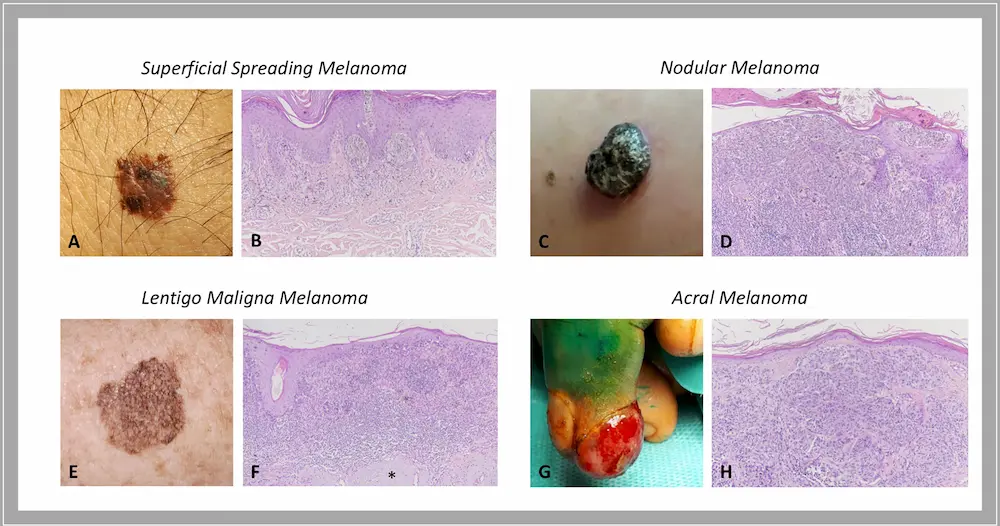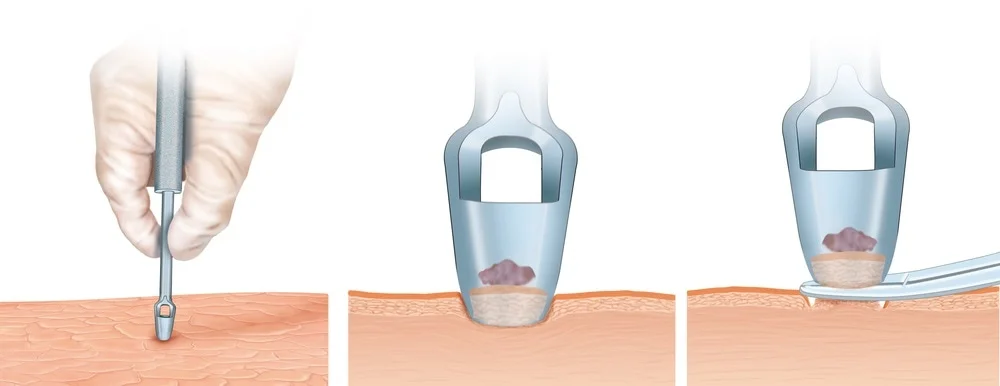
Advanced basal cell carcinoma (BCC) is a serious skin cancer that develops in basal cells and can invade surrounding tissues or, in rare cases, spread to other parts of the body. Common causes include UV radiation exposure and fair skin. Symptoms may include shiny bumps, non-healing sores, or flat patches. Diagnosis involves physical exams and biopsies. Treatment options range from surgery and radiation to targeted therapies.
Melanoma is a serious type of skin cancer that develops in the cells that produce melanin, the pigment that gives skin its colour. While it can occur anywhere on the body, it most often develops on areas exposed to the sun. At Hills Surgical Oncology, Dr Muzib Abdul-Razak, a leading Head and Neck Surgeon and Surgical Oncologist in Sydney, specialises in treating melanomas that develop in the head and neck region. Melanoma is considered the most dangerous form of skin cancer because it can spread quickly to other parts of the body if not caught early. However, when detected and treated early, the outlook is generally very good.

There are several types of melanoma, each with their own unique characteristics. These include:

Melanoma occurs when something goes wrong in the melanin-producing cells (melanocytes) in the skin. Normally, skin cells develop in a controlled and orderly way, but sometimes healthy cells develop DNA damage, leading to uncontrolled growth and forming a mass of cancerous cells.While the exact cause of melanoma isn't clear, several factors may increase your risk:
The first signs of melanoma are often a change in an existing mole or the development of a new, unusual-looking growth on your skin. To help you identify potential melanomas, remember the ABCDE rule:
In the head and neck area, melanomas can also cause:
If you notice any of these signs, it's important to consult a specialist like Dr Muzib Abdul-Razak at Hills Surgical Oncology promptly. Early detection and treatment can significantly improve outcomes for melanoma patients.

Diagnosing melanoma involves several steps. At Hills Surgical Oncology, Dr Muzib Abdul-Razak uses a comprehensive approach to ensure accurate diagnosis:
As a skilled head and neck surgeon in Sydney, Dr Muzib Abdul-Razak has extensive experience in performing and interpreting these diagnostic tests. His expertise ensures that patients at Hills Surgical Oncology receive accurate diagnoses, which is crucial for developing effective treatment plans.

Treatment for melanoma depends on several factors, including the stage of the cancer, its location, and the patient's overall health. At Hills Surgical Oncology, Dr Muzib Abdul-Razak works closely with a team of specialists to provide comprehensive care. The main treatment options include:
Surgery is the primary treatment for most melanomas. The type of surgery depends on the stage of the melanoma:
As a highly skilled Surgical Oncologist in Sydney, Dr Muzib Abdul-Razak specialises in complex head and neck surgeries. He uses advanced techniques to remove melanomas while preserving as much normal function and appearance as possible.
Immunotherapy helps your immune system fight cancer. It's often used for advanced melanomas or to help prevent recurrence after surgery. Types of immunotherapy include:
These drugs target specific gene changes in melanoma cells. They're often used for advanced melanomas with specific mutations.
Radiation therapy uses high-energy rays to kill cancer cells. It may be used:
While less commonly used now due to the effectiveness of newer treatments, chemotherapy may still be an option for some advanced melanomas. Dr Muzib Abdul-Razak at Hills Surgical Oncology stays up-to-date with the latest advancements in melanoma treatment. He works closely with each patient to develop a personalised treatment plan that offers the best chance of success while considering the patient's overall health and preferences.
Recovery from melanoma treatment can vary depending on the extent of the treatment. After surgery, the initial recovery period typically lasts a few weeks. During this time, patients may need to:
For patients who've had extensive surgery in the head and neck area, rehabilitation may be necessary. This could include:
Patients who've had immunotherapy, targeted therapy, or chemotherapy may experience side effects that can last for several weeks or months after treatment ends. These may include fatigue, skin changes, and immune-related side effects. Long-term follow-up care is crucial for melanoma survivors. Dr Muzib Abdul-Razak and the team at Hills Surgical Oncology provide ongoing monitoring to check for any signs of cancer recurrence and manage any lasting effects of treatment.
When facing a melanoma diagnosis, choosing the right care team is crucial. Here's why patients in the Hills area, Wahroonga, Norwest, and throughout Sydney choose Hills Surgical Oncology:
If you're concerned about melanoma or have been diagnosed with this condition, don't hesitate to reach out to Hills Surgical Oncology. Dr Muzib Abdul-Razak and our team are here to provide the expert care and support you need throughout your treatment journey. Remember, early detection and treatment are key to successful outcomes with melanoma. Regular skin checks and prompt attention to any suspicious changes can make a significant difference. At Hills Surgical Oncology, we're dedicated to providing the highest quality care to help our patients overcome melanoma and return to their normal lives.

Give our friendly receptionists a call on 1300 560 311 and they can help find a convenient time at all our locations. For urgent appointments, please let our receptionists know and we can try find the earliest time to see you.